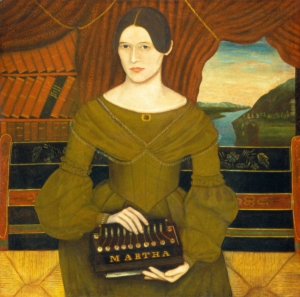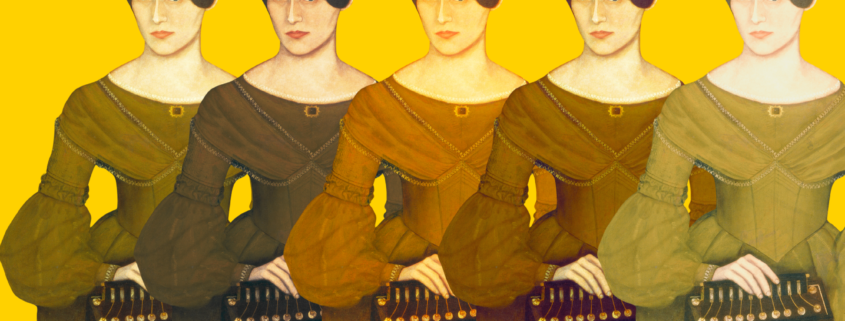The Art of the Artist Statement (How to Write an Artist Statement)
An artist statement serves as a written expression of your artistic practice, providing insight into your work for audiences who may encounter it in various contexts such as exhibitions, grant applications, or teaching positions. Artist statements are an extension of the art itself. It is similar to an abstract, something that summarizes the concept, influences, labor, and purpose of your work. Compelling statements often reflect a similar vulnerability as the work itself. Just as there is no right way to make art, there are different ways to write an artist statement.
Here’s a breakdown of what writing an artist statement might look like, when it’s used, and how to craft your own.
What is an Artist Statement?
Here’s a blurb taken from the Creative Independent that gives a great, concise definition—“An artist statement is a not-too-long series of sentences that describe what you make and why you make it. It’s a stand-in for you, the artist, talking to someone about your work in a way that adds to their experience of viewing that work.”
- An artist statement is a piece of writing inspired by or directly from you, offering insight into your artistic work.
- It is written in the first person, distinguishing it from artist bios, which are typically written in the third person.
- Both artist statements and bios represent you as an artist, conveying your artistic identity and intentions even when you’re not present.
- Your “artistic identity” may be different than your bio or personal narrative. There is a difference between the “you” in your bio and the “you” of your artistic identity that people can decipher from experiencing your artwork. When you write an artist statement, you get to decide how much or how little of your personal narrative is connected to the artwork.
Let’s take an example scenario.
Alicia is a life-long cross-country swimmer who enjoys taking trips to tread international waterways. She also works as a photographer of marine wildlife for National Geographic while maintaining an active art practice making photorealistic graphite drawings of the rising water levels and pollution she encounters along her travels.
Alicia’s artistic bio might highlight her role as a photographic journalist, her love of swimming, and her climate consciousness. However, when she writes an artist statement for her drawings, she may underscore, along with the media and processes, her concerns for our environment and the health of global marine ecosystems. Her “why” is to raise awareness for marine life and waterways. Her “artistic identity” is the part(s) of herself that defines her art-making.
Writing an artist statement requires space to reflect, analyze, compose, edit, share, and revise. It may include sources, ideas, and materials relevant to your current artistic practice. It will evolve as the artist evolves. Processes change. Interests change. Perspectives change. Feelings change. Skills change.
When to Write an Artist Statement
An artist statement can accompany a single work, a body of work (or series), exhibition, or entire practice.
- Some instances where you need to write an artist statement include:
- Exhibition submissions,
- Grant applications,
- Teaching position applications,
- Fellowships,
- Magazine and catalog features,
- Websites,
- Personal studio practice, distilling
- Selling a work of art
- They are a point of connection, and for many, an entry point into your work.
- They provide guidance to audiences, publicists, curators, and critics, directing attention to the key ideas and concerns in your work. Writing an artist statement can also be integral to your creative process, helping you articulate your artistic vision, work out your intentions, and even suggest the path forward in the studio.
Though it presents a challenge for some artists to write an artist statement, these statements hold immense value for creatives. Sitting down every so often to translate the silent or solitary artistic labor, which consumes countless hours, into words is something you can weave into your weekly or monthly professional dashboard. Taking time consistently to identify specific audiences, feelings, and efforts will help you to verbalize the essence of your creative journey and effectively convey the importance of your piece in as many words as can fill one paragraph.
The Recipe for Writing an Artist Statement
Take inventory—gather your ingredients.
- Identify the content of your work
- (This is like a formal analysis, call out what we see, the visual subject matter)
- Explain the form of your work
- (Including materials, processes, and traditions)
- Describe your artistic process
- (And provide visual or auditory descriptions)
- Discuss influences on your work
- (Whether cultural, historical, theoretical, personal, or biographical)
- Key ideas, issues, struggles, and goals within your work
- Clarify the thematic focus of your work
- (Setting it within a specific time and space)
Put it together. Expand on the chunks of information you compiled about the work. Think about it in three parts:
- Formal content—visual analysis, what you see, what you used to make it, how you made it, how long it took
- Contextual Information—what inspired you to make the piece, did anyone influence your work, what was happening around you that could have had an impact on the work,
- Interpretive Moment—why did you make it, who or what is it for? Do you want to tell the audience something to take away?
You can organize these parts however it feels most natural to you. You’ll see in some examples that artists weave the components together depending on what they are using the statement for.
Tips for Writing an Artist Statement
Keep your artist statement on file and update it as your practice evolves over time.
- Consider your audience and aim to make your work more accessible and understandable. Don’t dumb it down, but DO use language that most people can grasp without a PhD.
- If you’re uncertain or exploring new ideas, don’t hesitate to express it in your statement.
- Be authentic and avoid overly complex language or jargon.
- Keep your statement concise, straightforward, and honest.
- Make the reader want to learn more about your work without over-explaining. Leave room for the audience to want more or to insert their own meaning.
- Avoid relying too heavily on quotes unless they are directly relevant to your work.
Editing and Refining Your Artist Statement:
- Seek feedback from others, including friends, colleagues, faculty members, (or us!)
- Read artist statements and writings of artists you admire for inspiration.
- Keep a journal and integrate writing into your artistic practice to facilitate the process.
Wrapping Up
Learning to write an artist statement is an ongoing process that evolves alongside your artistic journey. By following these guidelines and continuously reflecting on your practice, you can create a statement that effectively communicates your artistic vision and engages your audience.
If you are ready to work with a team that can help you get into the studio doing what you love, let’s chat. Or join Coworking with Creatives, a series of free virtual workshops to help artists and creatives build sustainable businesses.
Banner art credits: Martha, c. 1835 is an oil on canvas piece by an unknown 19th century American artist. From the folk art tradition, with its flat, two-dimensional rendering, typical of many self-taught or primitive artists. This simplicity of form makes it easier for digital processes to create clear lines and blocks of color that frame and draw out the rich texture. 



